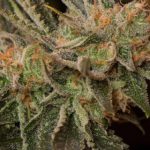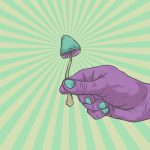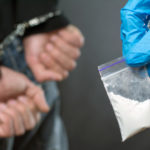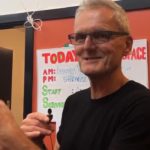The History of Drug Criminalisation in the Western World

The first importers and suppliers of what are now classed as illegal drugs were not your typical criminals, but a group of nations, called Great Britain, Portugal, France and the United States of America.
The Opium war
Britain actually started a war with China, called the Anglo-Sino War, or Opium War, (1839 to 1842) which had enacted legislation to protect its citizens from the addiction of opium; grown under contract in Bengal, India, by the British.
France joined Britain in a second war with China, (1856 to 1860) under the guise of a diplomatic reason, despite it being clear, it was again over opium.
This large-scale criminal venture allowed Britain and other nations to purchase goods such as porcelain, silk and tea, which made vast profits, capable of balancing the said nations’ economies at that time.
Interestingly, about the 6th to 7th centuries, Turkish and Arab traders had initially introduced opium to China, grown in Turkey; however, this was sold as a legitimate pain medication.
Not too long after the wars, Great Britain, itself, introduced the Pharmacy Act 1868, due to what it called, ‘The Scourge of Opium’ addicting its citizens.
According to many historians, such was the level of systemic corruption at the time that Britain had the audacity to open the British East India Trading Company, to continue, clandestinely, trafficking opium against what was now law.
A century on
A century later, the 1960s had arrived, whereby the importation of amphetamines, marijuana (or cannabis), heroin and cocaine were included in the ‘Scourge of Opium’.
This was to be followed by other substances categorised as dangerous.
The Board of Pharmacy of New South Wales was formed in the late nineteenth century, after which rhe Pharmacy Act of New South Wales came into effect, 1897.
This ensured that unqualified individuals were not able to sell products that fell under the Act.
Lengthy sentences for drug offences
Whilst Great Britain and its cohort nations were never brought to justice in the criminal courts, those convicted of drug offences would face lengthy periods of imprisonment, from up to 25 years to life, depending on the quantity of drugs imported or trafficked.
Unlike Australia, many other countries were even less lenient, imposing the penalty of death to those convicted.
World War II
‘Historical War Records’ suggest that between April and July 1940, German soldiers consumed 35 million methamphetamine tablets.
British soldiers are believed to have consumed 72 million such tablets throughout the ‘Second World War’.
Japanese ‘suicide pilots’, amongst other servicemen and munitions workers, were also administered them.
And United States military were similarly provided with methamphetamine pills; not only during the Second World War, but also during the Korean War & Vietnam War.
Australian Forces, similar to other allied nations, would no doubt have had access to the same ‘illicit drug’.
It has been reported that many of those countries’ ‘Pharmaceutical Companies’ were involved in the consultation process and advised that, apart from allowing more productive hours of being awake, drug consumption would reduce the fear of combatants.
Relieving pain is divine
‘Divinum Opus est Sedare Dolores’
Translated, this means:
‘Relieving Pain is Divine Work’
These words are attributed to Hippocrates, the Greek physician regarded as the ‘Father of Medicine’ when discussing opium; which was among the world’s oldest known drugs and can be traced back to the 4th century BC.
Hippocrates was instrumental, amongst other physicians, in debunking religious philosophies that illness was caused by the ‘Gods’; and stated that illness had a ‘natural cause’.
This ultimately led to the ‘Hippocratic Oath’, sworn by doctors to this day, to uphold specific ethics in medicine.
The 17th century saw the first acknowledgement that the wonders of medical science also had addictive effects, leading to destruction of families and end of life in many addicts.
Rewind
Early global ancestors lived as hunter-gatherers, such as Australian Aborigines, Amazon Indians and Kalahari Bushmen (amongst other Indigenous nationalities) and undoubtedly, collected considerable information on pharmacological plants.
Otzi, a 3300 BC year-old man, whose frozen body was recovered in the Otztal Alps (on the border of Austria and Italy) in 1991 confirmed this; as he carried a ‘pharmaceutical substance’, with antibacterial and haemostatic (essentially prevents excessive bleeding) properties in his pouch.
The question must be asked, were the substances for medicinal purposes, or addictive relief, or perhaps both?
Otzi can be seen at the South Tyrone Museum of Archaeology, in Bolzano, Italy.
Helen of Troy, the ‘Face that Launched a 1000 Ships’ although, she actually came from Sparta, Greece, is said by some historians to have lived around 1200 BC.
History suggests that Helen was given opium by an Egyptian queen, with which she treated Greek warriors, mixing it with wine.
Though, some ‘exegetes’ who are interpreters of ‘Ancient Text’, suggest it may have been some other form of drug, similar to an anti-depressant.
Noah, according to Jewish and Christian tradition, on leaving the ARK after the floods, planted a vineyard; ultimately drinking the wine and becoming drunk on some occasions.
Narco state
A ‘Narco State’, otherwise known as ‘Narco-Capitalism’ and ‘Narco Economy’, is a political and economic term, which defines countries; whereby many Governmental and Non-Governmental Institutions fall prey and succumb to the power and wealth of the illegal drug trade.
This is accomplished by force, bribery and blackmail, as seen in countries like Mexico, Honduras, Afghanistan, Myanmar, Bolivia and Panama, amongst others.
Manuel Noriega, dictator leader of Panama, was an ally of the United States of America, whose involvement in large-scale drug offending, saw him imprisoned in the United States, France and, ultimately, Panama.
Osama Bin Laden, leader of the terrorist organisation, Al Qaeda, was another reputed former ally of the United States during the ‘Soviet-Afghan War’; and the world saw how that turned out!
Banks benefit from illicit drug trade
Just over a decade ago, Antonio Maria Costa, an Under-Secretary-General of the United Nation’s Office on Drugs and Crime (UNODC), stated that world banks laundered illicit drug cash, to stay afloat during the Global Financial Crisis.
Mr Costa, former Secretary-General of the European Bank and ultimately, Director-General of the United Nations, was well qualified to bring this criminal act to the attention of the world.
Evidence, in relation to this assertion, from Great Britain, Italy and Switzerland and perhaps the United States; appears to support that a significant unexplained portion of usd352 Billion was absorbed by the financial system at that time.
Widespread use of illicit drugs
In a UNODC report, released in June 2020, it was suggested that:
* 269 million people, worldwide, having used illicit drugs in 2018.
* 35 million people suffered drug use disorders.
* A significant number became infected with other illnesses, such as approximately 5 million with Hepatitis C & 1.4 million with HIV.
In the World Drug Report 2021, also composed by UNODC it is reported that now:
* 275 to 284 million people have used illicit drugs.
* 36 million suffer from drug use disorders.
* Relatively new drugs that are unpredictable and currently poorly understood, are reaching the ‘Black Market’.
The drug, Fetanyl, which is posing serious concern in the United States, is one such drug; now being consumed and seized in Australia; and is another in the long list of unpredictable illicit drugs, as is Ketamine.
Australian Criminal Intelligence Commission
In October 2021, the Australian Criminal Intelligence Commission (ACIC) published its Illicit Drug Data Report for 2019/20.
During this period, Australian Law Enforcement seized approximately 38.5 tonnes of a combination of amphetamines, cocaine, heroin, MDMA and cannabis, worth roughly aud9.7 billion.
ACIC statistics are enhanced by the ‘data & analyses’ from all Australian & Territory Law Enforcement Agencies; including the Department of Home Affairs.
The University of NSW National Drug and Alcohol Research Centre, (NDARC) also contribute to statistical data, as do several other learning institutions.
Debate continues
As with many qualified persons before them, Associate Professor, Ann Peacock, Head of (NDARC) at the University of NSW and Dr Marianne Jauncey, Medical Director of the NSW Uniting Medically Supervised Injection Centre, are two clinicians who subscribe (albeit in different ways) to the theory that the “punitive approach is ineffective”.
This, in part, is borne out by the Australian Criminal Intelligence Commission’s (ACIC) National Wastewater Drug Monitoring Program (NWDMP) and Illicit Drug Data Report (IDDR) results.
The comforting thought is the perceived view of Michael Phelan APM, Chief Executive Officer of ACIC; who states in an IDDR, that “Illicit drug use cannot be addressed by law enforcement alone- a multi-faceted approach is needed…”
However, in the most recent UNODC World Drug Report, Executive Director, Ghana Waly, suggests that since the decriminalisation of cannabis in some jurisdictions and circumstances, there has been “an increase in hospitalisation, psychiatric disorders and suicides.”
It would seem to be prudent that both punitive and treatment-based legislation must be the answer, with the punitive aspect reserved for those directly responsible for creating the illness of addicts.
Notwithstanding, the ill addict’s loved ones, who suffer with many other forms of sickness, as a result.
Reform
Many believe that the legalisation of smaller amounts of drugs should be pursued with more vigour, and that those who are dependent should be treated medically, rather than as criminals.
An illness, which leads to many users becoming suppliers to self medicate, should not lead to conviction and heavy penalties, which can include time in prison.
This is essential, as those ill individuals are unable to be treated in prison, where sadly, many of those patients are currently sent.
Politics
Whilst the NSW Government, based on the ‘Findings’ of Professor Dan Howard SC, Commissioner of the Special Commission to Inquire into the Drug Ice some years ago, has recently pledged what appears to be a significant amount of funding for the treatment of those in need; it is clear, as argued by those ‘Reform Advocates’, to be simply an important initial contribution in the struggle to combat this perpetual pandemic, that of ‘Drug Addiction’.
The Australian Institute of Health and Welfare, in reporting the results of the National Drug Strategy of the 2019 Household Survey, (The survey is run every 3 years) estimated that 9 million Australians (over 40%) aged 14 and over, at some stage in their life took illicit drugs.
Further, 3.4 million Australians had taken an illegal drug in the previous 12 months.
Criminalisation enriches organised criminals
ACIC’s NWDMP ‘Report 17’, published on 26 October 2022 and relating, in part, to the April 2022 ‘Collection’, indicated that from the monitoring of approximately 14.1 million of the population, Australians spend aud10.3 billion annually on illicit drugs.
This Report should be read in conjunction with ‘Report 16′ to more accurately interpret and summarise results.
According to these figures from ACIC, Australia is placed 1st in ‘Global Ranking’ amongst ‘Reporting Countries’ for Methylamphetamine, 5th for MDMA, 6th for CANNABIS, and 15th for COCAINE.
These figures, however, may move up or down a place, depending on a forensic interpretation of the complex Reporting methodology.
Now, Reporting Countries number only 27 in total, but encompass 129 cities. They come under the name ‘Sewage Core Group Europe’ (SCORE) and incorporate Europe, Asia and Oceania.
For the 17th Report, the following drugs were tested:
- Methylamphetamine
- Amphetamine
- Cocaine
- MDMA
- MDA
- Heroin
- Cannabis
- Oxycodone
- Fetanyl
- Nicotine
- Alcohol
- Ketamine
World Drug Report 2022
This Report speaks of research undertaken in 2020, making the following estimations of drug users in ‘scored countries’:
- Cannabis 209 million,
- Opioid (Heroin & Fetanyl) 61 million,
- Amphetamines 34 million,
- Cocaine 21 million, and
- Ecstasy 20 million.
The countries scored are as follows:
Austria, Belgium, Chile, Costa Rica, Croatia, Cyprus, Czech, Greece, Indonesia, Italy, Lebanon, Luxembourg, Malta, Mexico, Netherlands, Norway, Poland, Slovakia, Slovenia, Spain, Sweden, Turkey, Ukraine, United Kingdom of Great Britain and Northern Ireland, Uruguay.
It is anticipated that the Score countries will increase to 41 in the near future.
Interesting facts
- Afghanistan & Myanmar are responsible for 86,% of Poppy Cultivation in 2020 (figures for 2021 not yet in)
- Estimated total global Poppy Production for 2021 is 7930 tons.
- Most of the world’s Fetanyl was located in the U.S.
- Very limited countries report their individual seizures to UNODC.
- Over the past decade, UNODC has identified 87,000 vendors on the Darknet Market on the Darkweb, with over 91% of usd1.2 billion for drug sales in 2021.
Drug revenue
Total Revenue of pharmaceutical companies, according to the reputed provider of data analyses, Statista, is USD1.4 trillion
Total Revenue of illicit drugs is virtually incalculable, the reason being, as pointed out by UNODC, limited countries report the necessary statistics.
It is a painstaking task and to come close to reaching a realistic figure from working with the SCORE countries, even with the anticipated increase, it will barely reach 25% of all nations of the world.
It somehow makes a ‘mockery’ of the fact that there are 193 MEMBER STATES in the UNITED NATIONS, yet only 27 countries currently report drug seizures!
Having forensically reviewed the ‘models’ of this agency and their collaborative partners, their endeavour is impressive and their efforts at estimating land under crop insightful; but with most of the world’s nations reticent in reporting seizures, it appears too difficult a task to accomplish.
The anomaly in the reporting saga is that between 2016 to 2020, 117 countries reported seizures of methamphetamine; though no clarification is made if the same smaller amount of countries reported each of the 4 years – and no other drug was mentioned.






